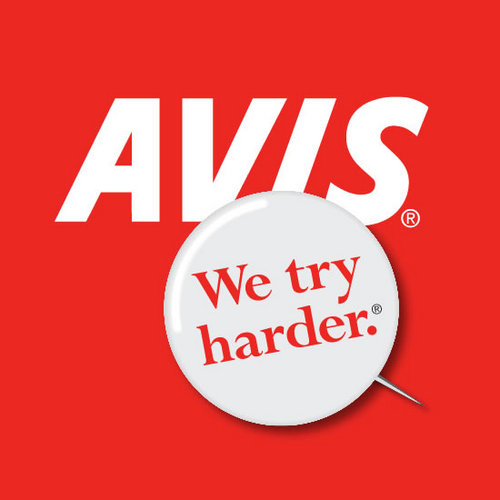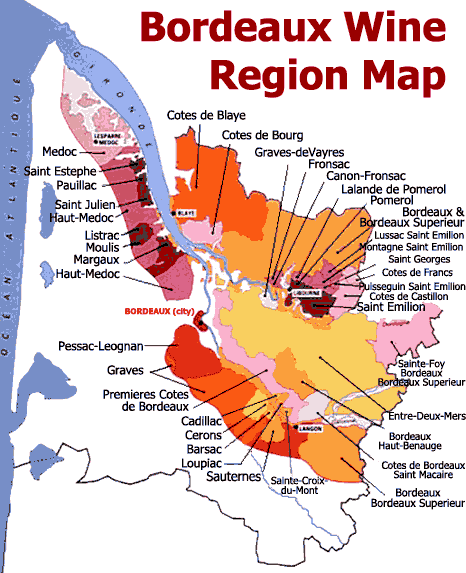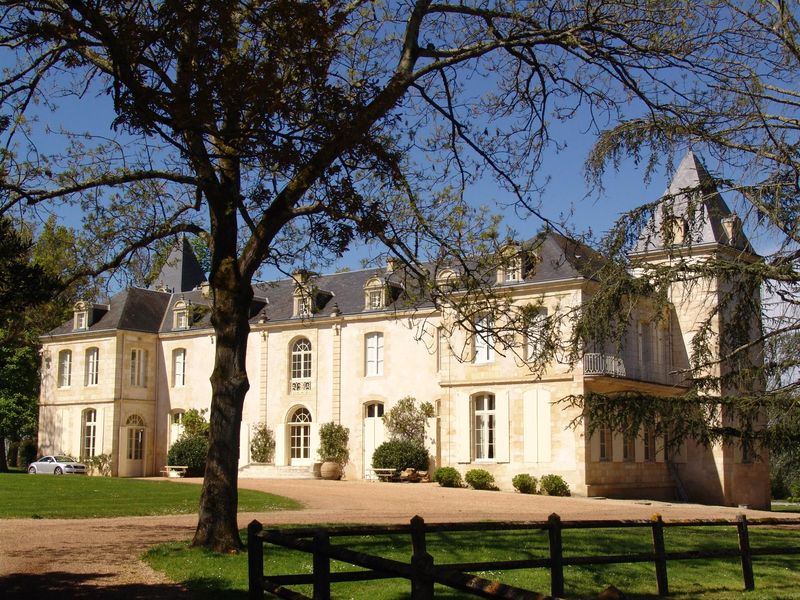
If you’re of a certain vintage – or a student of advertising – you may be familiar with the seminal 1962 advertising campaign for Avis. The car rental company summed up their ‘customer promise’ in the pithy advertising tagline “We Try Harder”. Of course, consumers everywhere wondered try harder than whom? Without saying as much, the campaign humbly acknowledged Avis’s underdog status and promised customers a heartfelt attempt to do better and be better than the un-named leading brand (ahem – Hertz).
It strikes me that Château de Reignac is the Avis of Bordeaux. Except this modern day “underdog” hasn’t taken aim at any one wine estate. Instead, they’ve taken on the entire region of Bordeaux. And they have some formidable competition. Like the 61 celebrated estates on Bordeaux’s Left Bank – famously classified under Napoleon III in 1855 to reflect the current day hierarchy of prestige and quality. Add to that, the 82 classified estates of Saint Emilion, on Bordeaux’s storied Right Bank. Then there’s the 267 classified Cru Bourgeois in the Médoc, the 16 Crus that make up Grave’s great classified wines, the unclassified wines of Pomerol, and another 7000 (ish) châteaux in the area who, together, produce some 10,000 different Bordeaux wines.
That’s a lot of competition.
A quick google of Château de Reignac suggests it’s definitely owed its due. The estate produces outstanding Bordeaux wines and has been lauded by some of the world’s best critics (i.e. Robert Parker, James Suckling). The château itself is stunningly beautiful and offers inspiring experiences for visitors to the estate with architecture, immersive viticultural experiences and wine tasting features that have earned Reignac multiple Tourism Destination Awards. Plus, they are true pioneers when it comes to digital marketing, brilliantly tapping the international potential of YouTube long before châteaux in the region had even heard of social media.
Château de Reignac

So why must they try harder?
Well, for one, Château de Reignac is un-classified, so they’re not part of the formal wine elite of Bordeaux. And if any wine region in the world screams elite and exclusive, it’s Bordeaux. This region is the haute couture of the wine world, the Coco Channel of fashion, the Bentley of automotive, the very definition of luxury.
For two, Reignac falls between the illustrious Left and Right Bank of Bordeaux in a region – and appellation – that doesn’t get a lot of respect. How so?

Château de Reignac is located in Bordeaux’s largest sub-region, Entre-Deux-Mers, which – roughly speaking – translates to between two seas. The term ‘sea’ is a bit of an exaggeration. More precisely, the region lies south of the Dordogne and north of the Garonne rivers in a large triangular swath that sits squarely between the illustrious wine communities of the Médoc and Saint Emilion/Pomerol. Entre-Deux-Mers is beautifully scenic with lush, green rolling hills and many picturesque medieval villages, but sadly, it’s mostly a transportation corridor between Bordeaux’s marquee destinations.
For three – yes, we’re still counting – Château de Reignac produces wine in an appellation that features humble price points and in turn, generates humble consumer expectations.
The expansive Entre-Deux-Mers super-region is largely known for producing great value wine. The namesake Entre-Deux-Mers AOP, permits white wines only, accounting for just 3,000 (7,400 acres) of the region’s 10,000 hectares. Until 1974, white wine from the region was primarily sweet and semi-sweet and had a reputation for questionable quality. Today, fragrant, crisp, dry whites are the draw.
Red wine in Entre-Deux-Mers, is sold under the general appellations Bordeaux and Bordeaux Supérieur (more on this later). Production has been growing exponentially since producers figured out red wine commands higher margins than white wine. Today, the Entre-Deux-Mers region is a red wine engine producing close to 1 million cases annually, much of it sold as generic – Vin de Table – value wine.
Four…..Check any marketing text-book, and you’ll see one of the key tenets of marketing is never build a brand – or in this case a wine region – on value alone. When a brand competes solely on price, it’s generally a race to the bottom. Indeed, the Master Sommelier I studied with in Toronto described the Entre-Deux-Mers region as – and I quote – “ordinary, straight-forward and good value”. It’s clearly a vast, over-simplification and unfair to tar an entire region with that description, but those are the ‘perceptual hurdles’ – brutal as they may be. Indeed, almost every journalistic and information reference I found in ‘the literature’, describes Entre-Deux-Mers wines as a ‘real bargain’, ‘lesser known wines’, ‘at a fraction of the price’ – all, reinforcing ‘value’ as the region’s key brand attribute. In business, “consumer perceptions” may not line up with reality, but it’s clear the region has its share of brand obstacles to address.
For five, I’d argue most tourists travelling to Bordeaux don’t travel to what is arguably the world’s most esteemed wine region for value. They go to indulge in the aristocracy, ogle at the excess of the castles and to be seduced by the world’s most famous luxury wines. No one will say “uh, no” to perceived value, but it’s a shaky, stand-alone brand proposition and not the defining experience most visitors are seeking for their Bordeaux itinerary.
Finally – I get the feeling regional tourism services don’t help. A quick search of Bordeaux tours – which I hesitate to do because le Internet will forever show me Bordeaux tour ads – and you’ll see many versions of Left and Right Bank chateaux tours. Again, the esteemed route du vin lies squarely between the Médoc and Saint Emilion, and if there is a third destination, it’s the lauded vineyards of Sauternes and Pessac-Leognan. The result is few #winelovers visit the Entre-Deux-Mers “middle ground” when they schedule Bordeaux tastings because few tour providers feature the region. And no question – the travel and wine media give it short shrift.
So in many respects, Château de Reignac is shouldering the weight of the region ….a region that’s often geographically overlooked, under-promoted, and might be accused of offering a somewhat diluted Bordeaux experience.

Trying Harder – A Case Study in Innovation
So that’s the ‘problem-to-be-solved’ or the ‘business obstacles’ in case-study speak.
The solution? Try harder. Innovate. And take risks! As Muhammed Ali once said:
He who is not courageous enough to take risks will accomplish nothing in life.

Certainly, none of these obstacles were going to stop owners Yves and Stephanie Vatelot from realizing their Bordeaux oenology dream.
The Vatelots bought the Château de Reignac estate in 1990. They knew they’d have to take a page from the Avis playbook and try harder on all fronts to make the château worthy of consideration both as a cru-competitive, fine-wine selection and as a tourist destination. An engineer by trade, Yves was a hard-core entrepreneur with an appetite for risk-taking. In 1986, he launched an electric shaver for women called the Epilady, which became an international success and revolutionized the women’s hair removal category. The advertising agency I worked at did much of the early creative on the brand after Vatelot sold the patent, which is a whole other story and a serious digression… but quelle coincidence!

With the help of famous oenologist Michel Rolland, the Vatelots took on the challenge of Château de Reignac. They knew they were sitting on a terroir gold-mine (the best of the Left and Right bank soils). The key challenge would be turning the Entre-Deux-Mers location – a potential negative – into a positive.
Fast forward thirty years and today, Château de Reignac’s wines rival the most celebrated grand cru’s of Bordeaux and their ‘visitor experience’ is considered amongst the best in the world. The innovative winemaking and marketing team has taken strategic, calculated – and gutsy (some would argue misleading – but more on that in the next post) risks, driven by that try harder ethos and the business obstacles they face. Certainly, their scrappy, innovative, can-do attitude using social platforms is an example of transformative marketing within Bordeaux.

Building a successful brand can sometimes mean playing with fire. You can be smokin’ hot one day, and go up in flames the next. Personally, I find the Chateau de Reignac story and case study fascinating.
…. and yes, all this at wine at prices that are a fraction of what you pay on the Left and Right bank.
How did they do it? By trying harder, of course. Here’s part two !
Feature image: Château de Reignac (with thanks)

Great post. You should enter it for an award…you never know.. you might WIN!!!!
XO
lynne
LikeLike